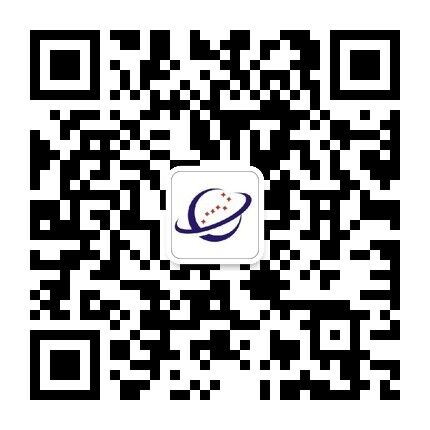News
China's BDS Expands Scientific and Technological Cooperation to ASEAN, Contributing to the Belt and Road Initiative

China's independently developed BeiDou Navigation Satellite System in on its way to provide services globally, with its first stop in Thailand and Sri Lanka where a prototype of BDS international cooperation will be built and its future destinations in ASEAN ten member countries and other Asian and African countries.
BDS is among the league of the four major global navigation satellite systems. It has four distinct features and advantages. The first is its short text communication function, which allows users to send back positioning information in deserts, at sea or in forests for the purpose of sending an alarm and asking for rescue. The second is innovation in technologies and management for the new generation of satellites. Hydrogen atomic clock employed as the space-borne atomic clock increases the precision from current 10-meter level to 2.5-meter level. And the additional autonomous operation and management capabilities make the satellites depends more on the new management system composed of interstellar links than the ground control system, thus reducing the dependence on the ground monitoring and control stations and effectively lowering costs and impacts on satellites in cases of disastrous events in the stations. The third the meter-level positioning provided by the CORS stations with national coverage, which technically guarantees high-precision millimeter-level positioning anytime and anywhere. The fourth that the BDS is the world's first tri-band navigation system free for the public, enabling flexible and convenient high-precision positioning while sections of GPS' and Galileo's frequency needs commercial authorization.
The BDS development has entered the second phase of the second generation. The first generation is the binary-star system developed between 1994 and 2000. The second generation is developed in two phases. In the first phase from 2004 to 2012, regional satellite navigation system which is composed of 16 satellites and covering the Asia-Pacific was built. In second phase, satellite navigation and positioning system with global coverage will be built. 23 satellites have so far been launched for the second generation of the BDS and 12 more are expected to be launched to complete a fleet of 35 satellites covering the whole globe by 2020. As technologies are mature to send multiple satellites aboard one rocket, this plan may be completed ahead of schedule.
The BDS has also expanded cooperation with relevant countries to consolidate satellite navigation frequency resources. It has, since 2000, effectively coordinated with more than 300 satellite networks across over 20 countries, regions and international organizations. It has also conducted comprehensive cooperation and exchanges with other satellite navigation systems in system construction, application among others to strengthen compatibility and interoperability and achieve resource sharing, advantage complementarities, and technological progress.
The BDS also faces competition from the America's GPS and Europe's Galileo. The first is its competition with the GPS of the United States. The GPS is also in a process of upgrading and expects to deploy GPS3 by 2020, the third generation of GPS. Compared with previous generations of GPS, the GPS3 enjoys a great advantage of greatly improved accuracy, which is even able to conduct indoor positioning. There is a gap for the BDS to acquire the same capacity by2020. GPS3 enables complete separation of military and civilian codes and facilitate the shielding of civilian codes, which means that the positioning signals of GPS civilian code-guided weapons may be directly cut off during wartime. The second is the competition with the Europe's Galileo mainly for the speed of the completion and provision of global navigation and positioning service. The one finishes the mission first will get earlier access to market application and economic interests.
In recent years, with the technical development trend of BeiDou chips and terminals becoming ever smaller, power consumption lower and cost lower, as well as the rapid emerging of the network of cars and network of things, the BDS products are approaching the public for popular applications. The BDS is witnessing more extensive applications in consumer goods such as smart phones, tablet PCs, handheld terminals, wearable equipment, and vehicle navigation and monitoring.
In the vehicle sector, the BDS was initially applied in motor bus, tourist bus and Dangerous goods transport vehicles. These three types of special-purpose vehicles and their operation are highly relevant to economic development and social stability, so their safe operation is the priority of regulation. In the past four years, monitoring equipment compatible with both GPS and BDS are compulsorily installed in these vehicles all across China. By the end of 2016, over ten million vehicles of the three types had been installed with BeiDou monitoring equipment, effectively ensuring the safety of road transport.
The second civilian application of the BDS is in the car navigation. As of the end of 2016, China's car ownership had reached 290 million and is expected to exceed 500 million with a sustaining average annual growth rate of about 15%. The BDS has a promising market prospect in the automotive electronics with a market size of up to hundreds of billions of dollars. Positioning and navigation have become requisite functions of smart phones and personal wearable. In 2015, about 80% of the China's mobile phones have positioning function, about 30% of which employs BeiDou navigation. A variety of applications spawned by the BeiDou location services will further strengthen the role of the BDS in the future development of mobile phones.
In December 2013, the first batch of three overseas base reinforcement system base stations were completed and linked to the network in Chonburi, Thailand, which conducted the application development and demonstration for the BeiDou smart traffic, fishing boats, intelligent industrial park among others. Besides, China-ASEAN BeiDou Technology City, which is dedicated to promoting BDS application in communications, transportation, networking and other key areas, is in the process of planning.
Li Deren, an academician and a professor of the State Key Laboratory for Surveying, Mapping and Remote Sensing Information Engineering of Wuhan University, said that the BDS employs five high-orbiting geosynchronous satellites in the equatorial orbit which can better cover such low latitudes regions as Southeast Asia and can achieve better signals. He also said that the Belt and Road Initiative opens up opportunities for China's international cooperation in space science and technology. For the first step, we should bring the BDS to countries along the Belt and Road and later should come up with innovative ideas to form in industrial chain of the BDS applications.

